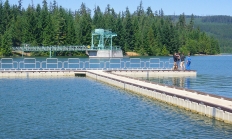Search myodfw.com
Showing 21 - 40 of 287 results
Article
The John Day – Umatilla area includes the John Day River and Umatilla River basins, and Oregon’s upper reaches of the Columbia River. The John Day Pool and McNary Pool of the Columbia offer outstanding fishing for bass and walleye, and many fishing tournaments are held here. Anglers also will find good fishing for bullhead catfish, crappie and other panfish in McKay Reservoir near Pendleton and Willow Creek Reservoir just outside of Heppner. For those who enjoy fishing for smallmouth, the John Day River offers one of the finest bass fisheries in the country and a unique opportunity for an
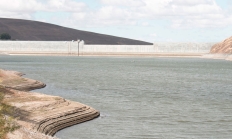
Article
Most warmwater anglers traveling to the northeast area are probably heading to Brownlee Reservoir, a huge 15,000 acre waterbody located along the Oregon-Idaho Reservoir on the Snake River. Brownlee offers outstanding fishing for bass and catfish, but might be best known for its crappie fishery which attracts anglers from throughout the country. However, anglers shouldn't overlook the other fishing opportunities located further downstream below Brownlee in Oxbow and Hells Canyon Reservoirs, and in the Snake River itself. Even in the lower Grand Ronde, a river better known for trout and steelhead, anglers will find good smallmouth bass fishing during the
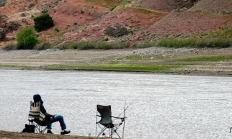
Article
The southeast area covers the high desert country of Harney and Malheur counties and is the most arid region of Oregon. Extended dry periods or droughts can affect the warmwater fisheries in this area, but these can be quick to rebound when water returns. The area’s most popular warmwater fishery is found in Owyhee Reservoir, a huge nearly 14,000 acre reservoir located on the Owyhee River south of Ontario that offers outstanding fishing for bass, crappie and catfish. There are few roads to and along Owyhee, but those with a boat will be rewarded with remote and spectacular scenery. Other

Article
The southwest area follows Interstate 5 from Drain south to the Oregon-California border and includes the communities of Grants Pass, Medford and Ashland. In this area, anglers can fish the famed lower Umpqua River, which offers one of the finest smallmouth bass fisheries in the country. Outstanding warmwater fishing for bass and panfish can also be found in the area's many lakes and reservoirs including Cooper Creek, Galesville and Emigrant Reservoirs, and Selmac Lake. Smaller ponds near Sutherlin, Grants Pass and Medford including those at ODFW's Denman Wildlife Area are also good bets, particularly for families or young anglers.

Article
All anglers fishing for salmon, steelhead or sturgeon (catch-and-release and retention) on all rivers and tributaries in the Columbia River Basin need to have a Columbia River Basin Endorsement (CRBE).

Article
If you bought a tag you must report, even if you weren't successful or didn't hunt. Hunters have until Jan. 31 and April 15 each year to report their previous year's hunts. Report your hunt online or at an ODFW license vendor.
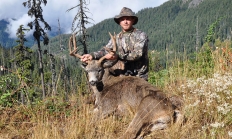
Article
Two commonly caught species of salmon are coho and Chinook. Fishing regulations require anglers to correctly identify salmon species as restrictions such as legal lengths and seasons often vary based on the species.
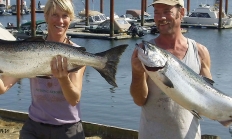
Article
An emergency hunt is an unanticipated hunt held on short notice to address acute agricultural damage. Many damage situations are addressed by controlled hunts during annual big game seasons. ODFW expects to implement very few emergency hunts during any year. On average, about 200 tags are issued annually statewide. Emergency hunt tags are in addition to tags for general seasons, controlled hunts or leftover hunts. Emergency hunt participants are selected from a list established on a county-by-county basis. You may apply for only one county.

Article
It's important to be able to distinguish between the most commonly encountered rockfish. Knowing what you've caught, and how many you can possess, will keep you on the right side of the regulations. Reminder: Yelloweye rockfish and quillback rockfish are prohibited at all times and in all waters.
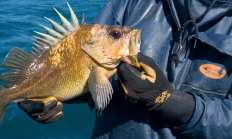
Article
A few waterbodies in Oregon are set aside just for younger anglers and those with disabilities—offering everything from warmwater and stocked trout to salmon and steelhead fishing.

Article
Rockfish must be released when retention is prohibited or when an angler has reached the daily bag limit, but continues to fish for other species. However, releasing rockfish isn’t as simple as just dropping them back into the water. Some rockfish need help to get back down to deeper water to recover from a condition called barotrauma.
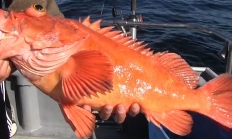
Article
With just a couple of tools and a few minutes, The Fish Grip™, originally designed as a safer way for anglers to land fish, can easily be converted into a rockfish descending device. Fish Grips™ can be purchased at local tackle shops or online.
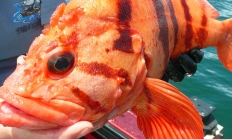
Article
Whether it's a 6-inch bluegill or a trophy-size bass, Oregon's warmwater fish offer anglers of all ages a variety of fishing opportunities. Check out some basic tips here, then head to the article that details places to go looking for warmwater fish species within the area of the state you're interested in.
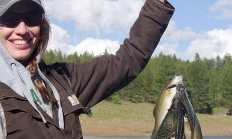
Article
A beginner's guide to waterfowl hunting on Sauvie Island - an introduction. Part 1 of a 5 part series.

Article
A beginner's guide to waterfowl hunting on Sauvie Island - Hunting in the Eastside Unit. Part 2 of a 5 part series.
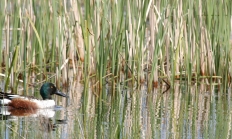
Article
Steelhead have been called the ultimate game fish. These elusive and challenging fish can test an angler’s patience and persistence, but the reward is hooking into a fish that is famous worldwide for its line-peeling runs and spectacular, acrobatic fight.

Article
Surf fishing is one of Oregon’s most underutilized fisheries. There are hundreds of places to fish along Oregon’s sandy beaches, and there are plenty of fish within an easy cast from shore.
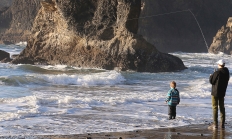
Article
A dozen great rivers pour out of the Coast Range Mountains into tidal bays that welcome runs of salmon and the sea-going rainbow trout called “steelhead.” Bays are the year-round home to marine perch, rockfish, crabs and clams, while other species come and go with the seasons and the tides. In the Northwest Zone a handful of ponds dot the forested slopes, and there are dozens of dune lakes— many stocked with plump rainbow trout, and some that grow their own largemouth bass, perch, crappie and brown bullhead.

Article
Salmon, steelhead and smallmouth bass offer world-class fishing here year-round. Rainbow trout are stocked in the upper Rogue and in lakes nestled in settings as varied as fir forest and wind-swept dune. Big reservoirs provide fishing for trout and for thriving populations of largemouth bass, catfish, perch and crappie. Coastal bays serve as gateways to rich offshore reef fisheries, and miles of public beach welcome anglers to fish for surfperch against a backdrop of rugged capes.
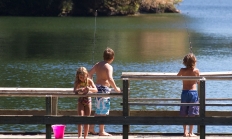
Article
Abundant rainfall feeds the massive Willamette River watershed, tamed by a system of reservoirs stocked annually with hundreds of thousands of rainbow trout. Some of these reservoirs also grow trophy-size largemouth and smallmouth bass, and lots of bluegill, brown bullhead and crappies. Salmon and steelhead navigate the Willamette and its productive tributaries, many of which are also home to rainbow and cutthroat trout.
